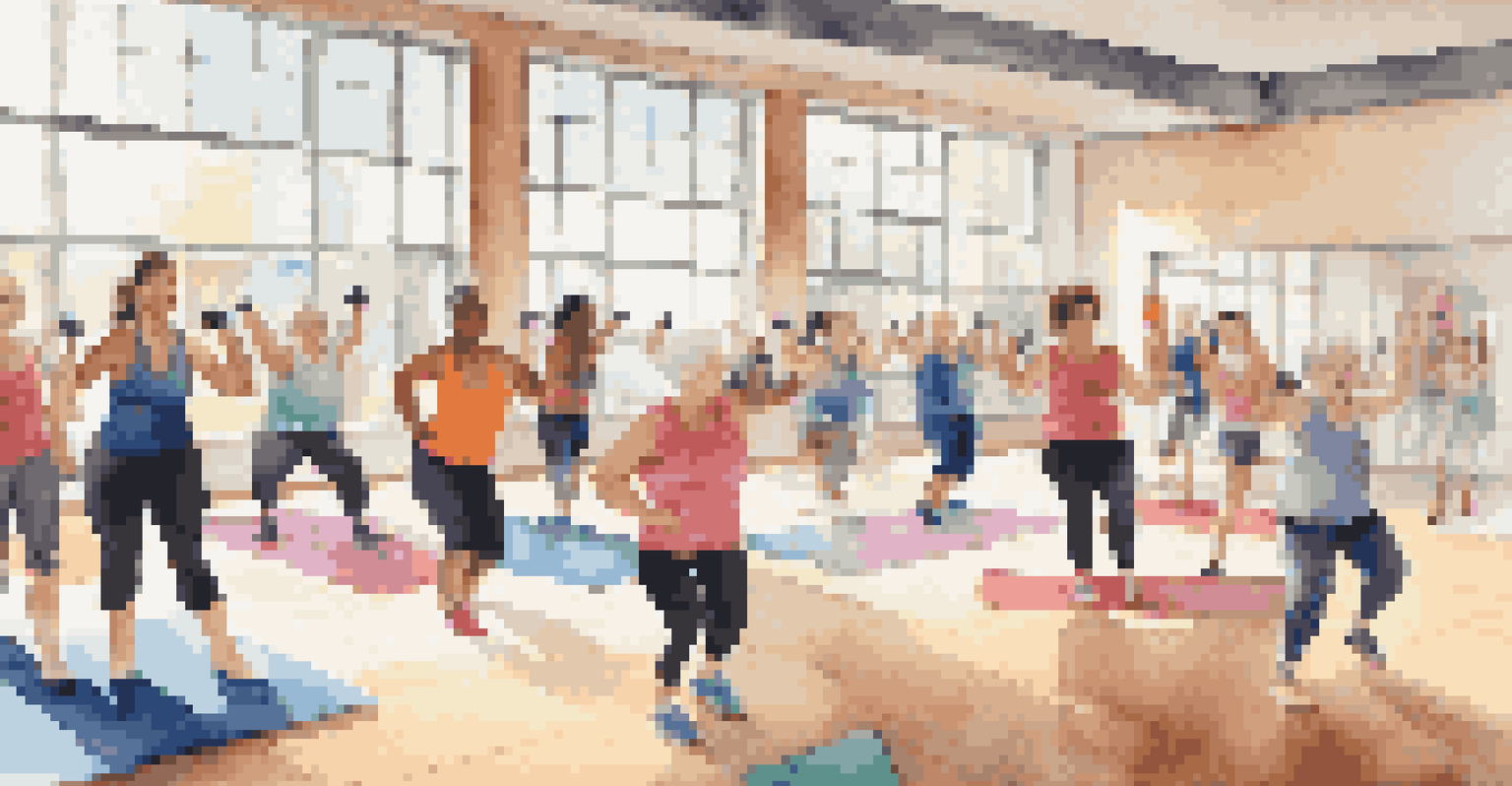The Role of Physical Activity in Reducing Chronic Disease Risk

Understanding Chronic Diseases and Their Impact
Chronic diseases, like heart disease and diabetes, affect millions worldwide. These conditions develop over time and can lead to serious health complications, impacting quality of life. Understanding their causes is crucial for prevention, and lifestyle choices play a significant role.
Physical activity is essential to maintaining a healthy body and mind.
Many factors contribute to chronic diseases, including genetics, diet, and physical inactivity. While we can’t change our genetics, we can actively modify our lifestyle choices to improve our health. This is where regular physical activity comes into play.
Engaging in consistent exercise not only boosts physical health but also enhances mental well-being. By integrating movement into our daily routine, we can combat the onset of these diseases and promote a healthier future.
The Science Behind Exercise and Disease Prevention
Research shows a strong link between physical activity and reduced risk of chronic diseases. Exercise helps regulate blood sugar levels, lowers blood pressure, and improves cholesterol profiles. These physiological changes can significantly decrease the likelihood of conditions like heart disease and diabetes.

Furthermore, physical activity strengthens the immune system, making the body more resilient against various illnesses. When we move our bodies, we also trigger the release of endorphins, which can enhance our mood and reduce stress—factors that can contribute to chronic health issues.
Chronic Diseases and Prevention
Understanding the factors contributing to chronic diseases highlights the importance of lifestyle choices for prevention.
Regular engagement in exercise can be a powerful tool in disease prevention. Even simple activities like walking or cycling can lead to remarkable health benefits over time, showing that every little bit counts.
Types of Physical Activities Beneficial for Health
There are numerous forms of physical activity that can contribute to chronic disease prevention. Aerobic exercises, such as walking, running, or swimming, are excellent for heart health and boosting endurance. Strength training, like weightlifting, can improve muscle mass and metabolism, further reducing disease risk.
The journey of a thousand miles begins with one step.
Moreover, flexibility and balance exercises, like yoga or tai chi, enhance overall physical function and can prevent falls, especially in older adults. Engaging in a variety of activities not only keeps the routine interesting but also ensures a well-rounded approach to fitness.
Finding an enjoyable activity can make all the difference. When exercise feels less like a chore and more like a pleasure, it becomes easier to stick with it long-term.
The Recommended Amount of Physical Activity
The World Health Organization recommends at least 150 minutes of moderate-intensity aerobic activity per week for adults. This can be broken down into manageable sessions, making it easier to fit into a busy schedule. Even 30 minutes a day, five days a week, can make a significant impact.
In addition to aerobic exercise, strength training should be included at least twice a week. This combination not only helps maintain a healthy weight but also improves muscle strength and bone density, reducing the risk of osteoporosis.
Exercise Reduces Disease Risk
Engaging in regular physical activity can significantly lower the risk of chronic diseases by improving various health markers.
It’s important to remember that everyone’s starting point is different. The key is to gradually increase activity levels and find a routine that feels sustainable and enjoyable.
Overcoming Barriers to Physical Activity
Many people face barriers that hinder their ability to engage in physical activity. Common obstacles include time constraints, lack of motivation, or limited access to facilities. Recognizing these challenges is the first step toward finding solutions.
To combat time constraints, consider integrating movement into daily tasks, such as taking the stairs instead of the elevator or walking during lunch breaks. Setting small, achievable goals can also boost motivation, making exercise feel less daunting.
Additionally, seeking out community programs or local groups can provide social support and accountability. Sharing your fitness journey with others can transform the experience into a more enjoyable and fulfilling part of your life.
The Role of Community Support in Staying Active
Community plays a vital role in encouraging physical activity. Having a support system can significantly impact motivation levels and adherence to exercise routines. Whether it’s a workout buddy, a local fitness group, or online communities, connection can make exercise more enjoyable.
Participating in community events, such as charity runs or group fitness classes, fosters a sense of belonging and shared purpose. This camaraderie can inspire individuals to push through challenges and stay committed to their health goals.
Community Support Enhances Activity
Having a supportive community can motivate individuals to stay active and committed to their fitness goals.
Moreover, local resources, such as parks and recreational centers, can enhance accessibility to physical activities. Taking advantage of these community offerings can transform your fitness journey into a fun and social experience.
Long-Term Benefits of Regular Physical Activity
The long-term benefits of regular physical activity extend far beyond reducing chronic disease risk. Consistent exercise can improve overall well-being, enhance mood, and increase energy levels. These positive changes create a ripple effect, encouraging healthier lifestyle choices.
Moreover, maintaining an active lifestyle can lead to improved longevity and a higher quality of life as we age. Individuals who engage in regular physical activity often report better mental health and cognitive function, showcasing the holistic benefits of staying active.

Ultimately, incorporating physical activity into daily life is one of the best investments we can make for our health. By prioritizing movement, we pave the way for a healthier, happier future.